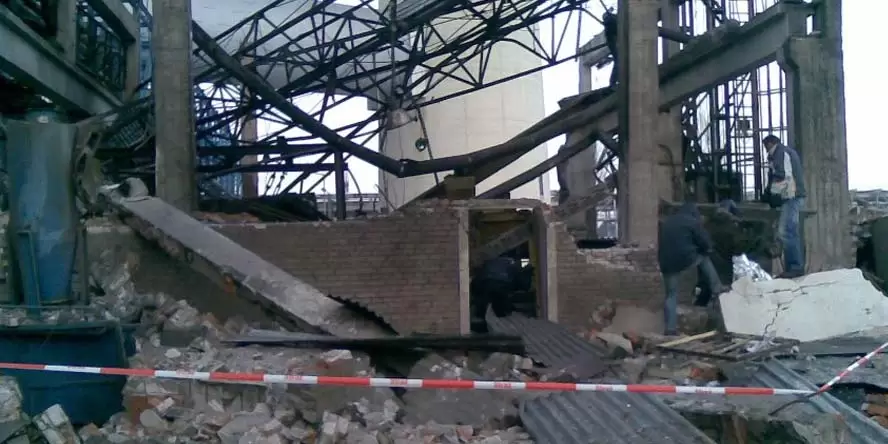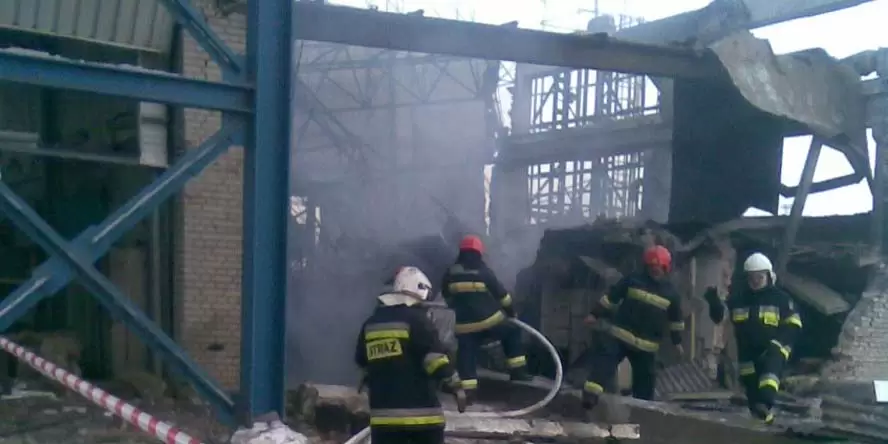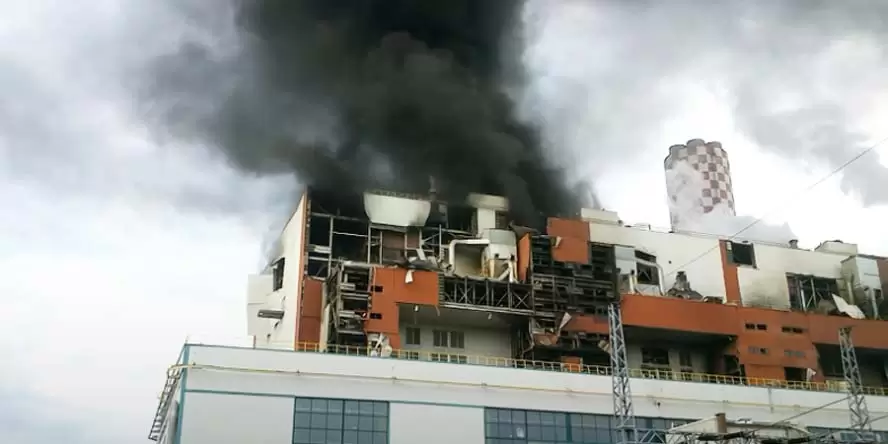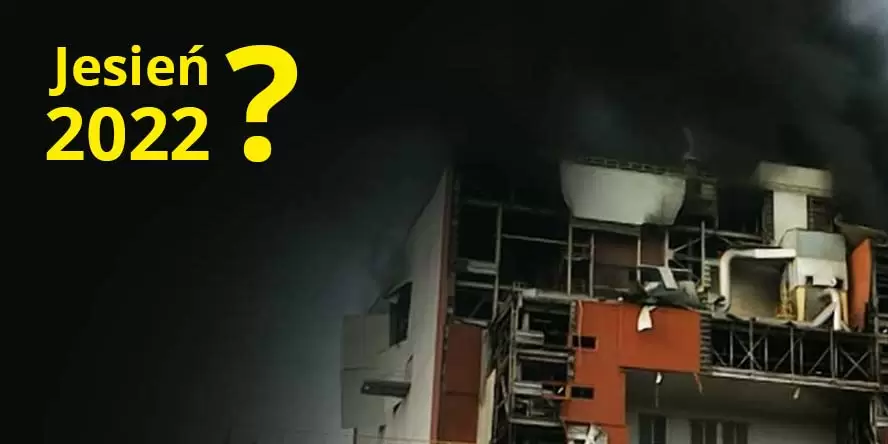The biomass boom observed a decade ago led to many explosions and fires in the power industry. Today, the shortage of coal from the East is, as it were, forcing the power industry to burn biomass and ‘new’ coal, which have a drastically higher propensity for uncontrolled ignition and explosion than the coal burned in the past. Are we in danger of the past repeating itself? Could powerful explosions like those at Turów or Dolna Odra occur again?
Lessons learned
Coal dust has always exploded. Anyone with even a passing familiarity with the realities of the power industry knows that such incidents are nothing new. More often than not, however, it ended in just a scare or relatively minor or moderate losses. This was the case for many years.
Explosion at Dolna Odra power plant
This situation changed just over a decade ago, at the time when power plants and combined power plants throughout Poland began to fire or co-fire biomass en masse – a fuel with significantly lower ignition energy and a significantly higher explosion energy. We did not have to wait long for the results. In 2010, a massive explosion occurred at the Dolna Odra Power Station. A part of the carbonisation system was destroyed. It was necessary to shut down the operating power units. The capacity of the power plant was limited to the minimum level of 60 MW. Large financial losses were recorded as a consequence. Worst of all, however, was the fact that the incident resulted in the death of one person and three others were injured.

Immediately after the explosion, the spokeswoman for the Regional Public Prosecutor’s Office in Szczecin reported that investigators and police officers had begun operations. More than 40 witnesses – people who were present at the site at the time of the tragedy – were interviewed. The necessary documentation related to operation of the destroyed power blocks was secured and an autopsy of the body of the man recovered from under the rubble of the collapsed building took place.
This incident was the main trigger for a series of inspections that the State Labour Inspectorate carried out at dozens of power and combined power plants. The report left no doubts: at the vast majority of the power plants and combined power plants, co-firing biomass and coal had begun without properly securing the carbonisation lines and the mill units against the potential occurrence and development of explosions of dust and air mixtures. In addition, process fires have occurred at most of the sites since approximately 2005, when biomass and coal co-firing had begun on an industrial scale.

Explosion at the Turów power plant
When the dust had not yet settled after the explosion at Dolna Odra, an explosion occurred at the Turów Power Plant in 2012. The incident had been initiated within the power unit number one. It was shut down due to ongoing repairs, but the resulting fire forced the shutdown of blocks 2, 3 and 4. Four people were injured in the explosion.
After the explosion, the Public Prosecutor’s Office, the State Labour Inspectorate, the Provincial Environmental Inspectorate and fire services worked at the site. The day after the explosion, Krzysztof Kiljański – then the president of PGE – arrived at the Turów Power Station. He confirmed that the situation was under control, despite the serious damage. Environmental activists, on the other hand, launched an information campaign claiming that … the explosion and fire at the Turów power station were the result of the greed of the Polish Energy Group. – By combining coal with biomass, PGE created a dangerous fuel mix.

The risks are on the rise again
This is how it used to be. And what is the situation today?
In the face of a geopolitical situation that translates into a shortage of coal from the East, the power industry is being forced, as it were, to burn biomass and ‘new’ coal, which display a drastically higher propensity for uncontrolled ignition and explosion than, for example, the hard coal burned in the past. As a result, we are in danger of the past repeating itself.
The WOLFF GROUP participated in providing the protection of over 200 milling units against the explosion and fire, i.e. at PGE, EDF (currently PGE), Veolia, Energa, Enea, CEZ, PGNiG, Tauron or PAK. The implementation of these measures was overseen by Mr Zbigniew Wolff, who provided such an opinion on the current state of affairs: the situation is much more serious than that of the biomass boom of 2005 – 2012. “This is caused by several facts.
Why is the situation more serious?

Firstly, today we are not only using biomass, but also coal, often containing high quantities of flammable gases. Both of these fuels pose a much higher explosion and fire risk than the coal burned in the past.

Secondly, today any power plant or combined power plant is threatened with the lack of fuel, which means that the scale of this phenomenon may be significantly bigger.

Thirdly, the sites which have implemented explosion protection in the past may be convinced they are safe despite the fuel change. As long as the ignition and explosion parameters of these fuels are similar to the parameters, for which the aforementioned safeguards has been designed, this is indeed going to be the case. If the parameters are different, however, the safeguards may no longer be effective. In such a situation, adjustments would have to be made to the safeguarding system.

Fourthly, the fuel, often delivered from quite exotic places, contains high levels of impurities, such as stones or metal parts, which may cause sparks potentially igniting the dust and air mixture.
Some know, others do not
We are currently undergoing talks with several sites, which include both systemic and on-site producers generating electricity and heat for their own needs and purposes. The level of awareness of the threat varies greatly. On the one hand, there are companies which know how serious the risks of introducing a new fuel are, and on the other hand, there are companies which discovered the risks by accident. This does not surprise me, personally. In the era of fuel shortages on the market, everyone’s eyes look elsewhere and this is a normal occurrence. Everyone wants to protect themselves against the coming winter – commented Wolff.
Finally, I would like to mention a study we performed for one of the power plants, which started sourcing coal from a new source in an emergency. It turned out that ignition and explosion parameters were significantly different despite the fact that TG experiments did not show meaningful differences. For example, the Kst parameter – which is a key parameter for the selection of safeguards – was twice as high in the case of the new coal. Contrary, the minimum ignition energy of the dust cloud, which indicates how easily ignition can occur, was twice as low. Analogously, the ignition temperature of the dust layer was 160oC lower. Are these big changes? “Figuratively, I would say that the difference is like making a fire using dry and fresh, damp wood – concluded Wolff.






